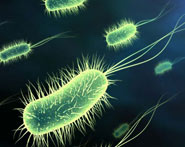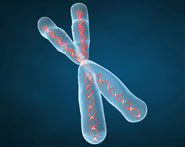


 النبات
النبات
 الحيوان
الحيوان
 الأحياء المجهرية
الأحياء المجهرية
 علم الأمراض
علم الأمراض
 التقانة الإحيائية
التقانة الإحيائية
 التقنية الحيوية المكروبية
التقنية الحيوية المكروبية
 التقنية الحياتية النانوية
التقنية الحياتية النانوية
 علم الأجنة
علم الأجنة
 الأحياء الجزيئي
الأحياء الجزيئي
 علم وظائف الأعضاء
علم وظائف الأعضاء
 الغدد
الغدد
 المضادات الحيوية
المضادات الحيوية| Development of Vaccines for Viral Hepatitis, Coronavirus, and Norovirus |
|
|
|
Read More
Date: 25-12-2020
Date: 2025-04-10
Date: 2025-03-27
|
Viral hepatitis is the most common cause of liver disease and is a major global health problem all over the world. Every year millions of people are infected with the hepatitis viruses. The consequences of chronic disease include cirrhosis, liver failure, and hepatocellular carcinoma. There are six main hepatitis viruses, referred to as types A, B, C, D, E, F, and G. These six types are of greatest concern because of the burden of illness and death they cause and the potential for outbreaks and epidemic spread. In particular, types B and C lead to chronic disease in hundreds of millions of people and, together, are the most common cause of liver cirrhosis and cancer. The hepatitis B and C are the most frequent reason for liver transplantation. Hepatocellular carcinoma which is one of the ten most common cancers is closely associated with hepatitis B, and may also be associated with hepatitis C virus [ 1 ]. As yet there are only vaccines for hepatitis A and B. Hence there is an urgent need to develop vaccines for other hepatitis viruses [ 2 ].
Coronaviruses are named for the crown-like spikes on their surface. The viruses primarily infect the upper respiratory and gastrointestinal tract. Coronaviruses probably spread through the air by coughing or sneezing, or by close personal contact. Severe acute respiratory syndrome (SARS) and Middle East respiratory syndrome (MERS) are novel coronaviruses that cause severe viral pneumonia in humans. The recent appearance of these viruses highlights the continual threat to human health posed by emerging viruses. SARS emerged in the human population in China in 2002, causing a worldwide epidemic with severe morbidity and high mortality rates, particularly in older individuals [ 3 ], whereas MERS was reported in Saudi Arabia in 2012. Bats are the natural reservoirs of SARS-like coronaviruses (CoVs) and are likely the reservoir of MERS coronavirus (MERS-CoV). Although a small number of camels have been found to have positive nasal swabs by real-time polymerase chain reaction and to carry antibody against MERS-CoV, the transmission route and the intermediary animal source remain uncertain amongst the sporadic primary cases [ 4 ]. All emerging viruses have an animal reservoir, such that the process of viral emergence can usually be categorized as cross-species transmission [ 5 ]. Vaccinologists should be aware of the viruses in the animal reservoirs as well as the mutants or recombinants in humans; proteomic and immunological data from both the animal and human mutants could be used to make effective vaccines.
The surge in economies of many developing countries since the last decades of the twentieth century coupled with low-cost airlines and cheap cruises has made air and sea travel affordable, which has led to the increased global movement of people and materials on an unprecedented scale. Outbreaks of noroviruses in cruise ships which can affect hundreds of passengers is an example of the rapid spread of an infectious pathogen ; the disease is also known to spread rapidly in semi-closed populations such as hospitals and hotels [ 6 ]. These viruses cause gastrointestinal disease, resulting in recurrent bouts of vomiting and diarrhea that typically last 24–48 h. Noroviruses are transmitted via the fecal–oral route, most commonly through infected food or water or person-to- person contact, and result in 267 million infections and over 200,000 deaths each year, mostly in infants and the elderly. Vaccines and therapeutics are under development but face considerable challenges as there is no cell-culture system or small- animal model for human disease, and these viruses are highly heterogeneous and undergo antigenic variation in response to human herd immunity, further complicating our understanding of the complex immune interactions that regulate susceptibility and disease [ 7 , 8 ].
References
-------------
[1]Zukerman AJ (1996) Hepatitis viruses. In: Baron S (ed) Medical microbiology, 4th edn. Chapter 70.
[2] Law LMJ, Landi A, Magee WC, Tyrrell DL, Houghton M (2013) Progress towards a hepatitis C virus vaccine. Emerg Microb Infect 2, e79
[3] Weiss SR, Leibowitz JL (2011) Coronavirus pathogenesis. Adv Virus Res 81:85–164
[4] Hui DS, Memish ZA, Zumla A (2014) Severe acute respiratory syndrome vs. the Middle East respiratory syndrome. Curr Opin Pulm Med 20:233–241
[5] Cleaveland S, Laurenson MK, Taylor LH (2001) Diseases of humans and their domestic mammals: pathogen characteristics, host range and the risk of emergence. Philos Trans R Soc Lond B Biol Sci 356:991–999
[6]Thomas S, Luxon BA (2013) Vaccines based on structure-based design provide protection against infectious diseases. Expert Rev Vaccines 12:1301–1311
[7] Koo HL, Ajami N, Atmar RL, DuPont HL (2010) Noroviruses: the leading cause of gastroenteritis worldwide. Discov Med 10:61–70
[8] Debbink K, Lindesmith LC, Donaldson EF, Baric RS (2012) Norovirus immunity and the great escape. PLoS Pathog 8(10), e1002921



|
|
|
|
حقن الذهب في العين.. تقنية جديدة للحفاظ على البصر ؟!
|
|
|
|
|
|
|
علي بابا تطلق نماذج "Qwen" الجديدة في أحدث اختراق صيني لمجال الذكاء الاصطناعي مفتوح المصدر
|
|
|
|
|
|
|
مشاتل الكفيل تنتج أنواعًا مختلفة من النباتات المحلية والمستوردة وتواصل دعمها للمجتمع
|
|
|